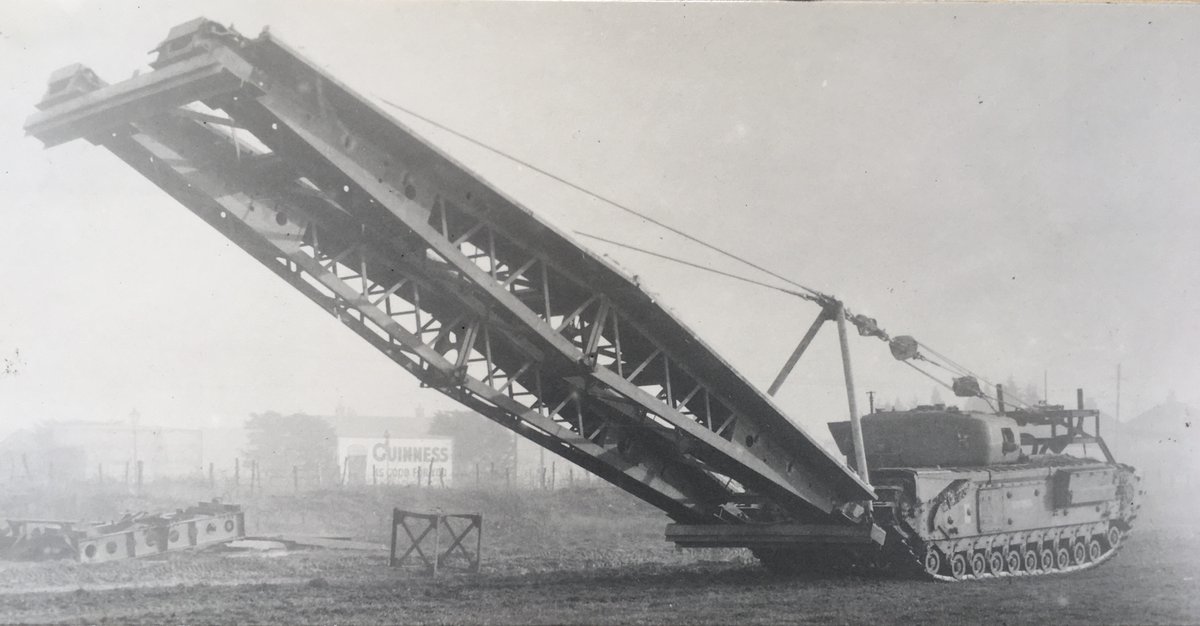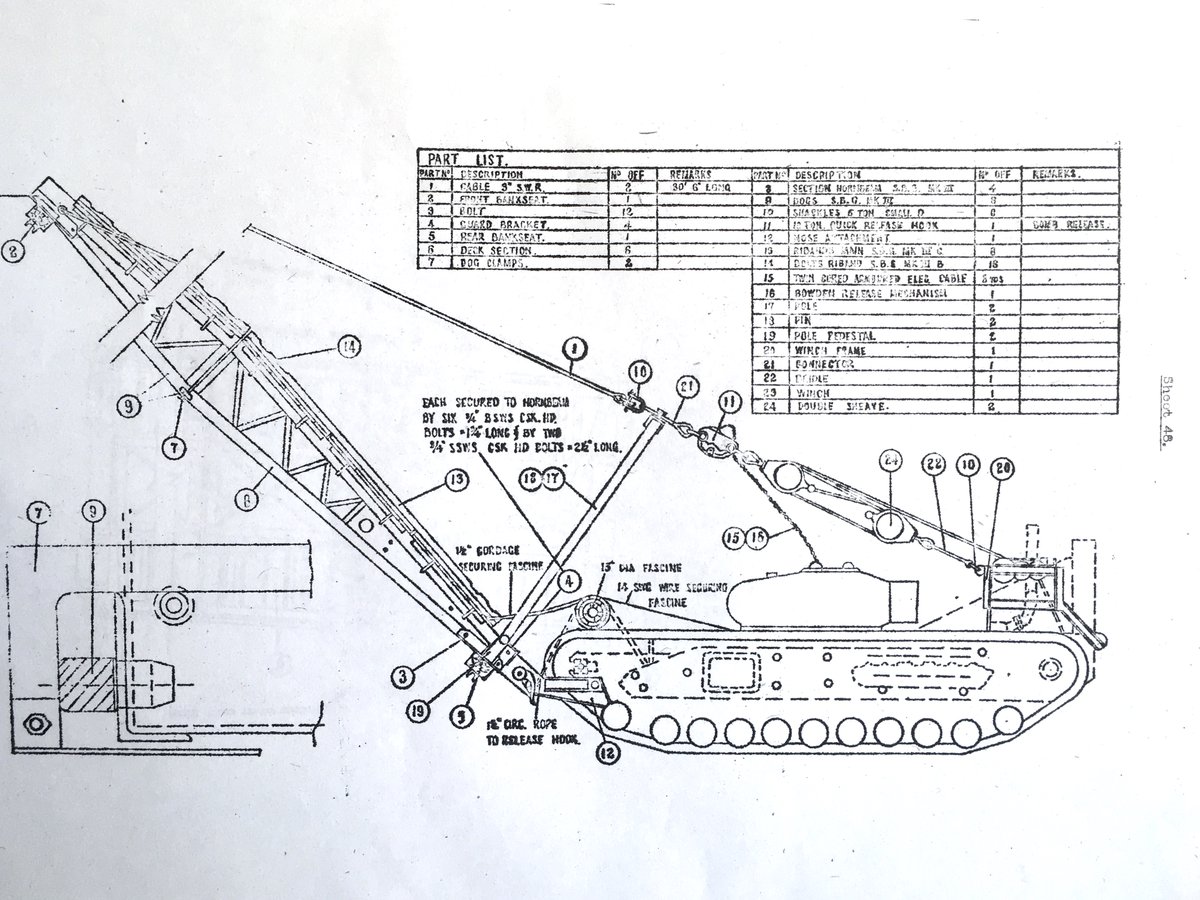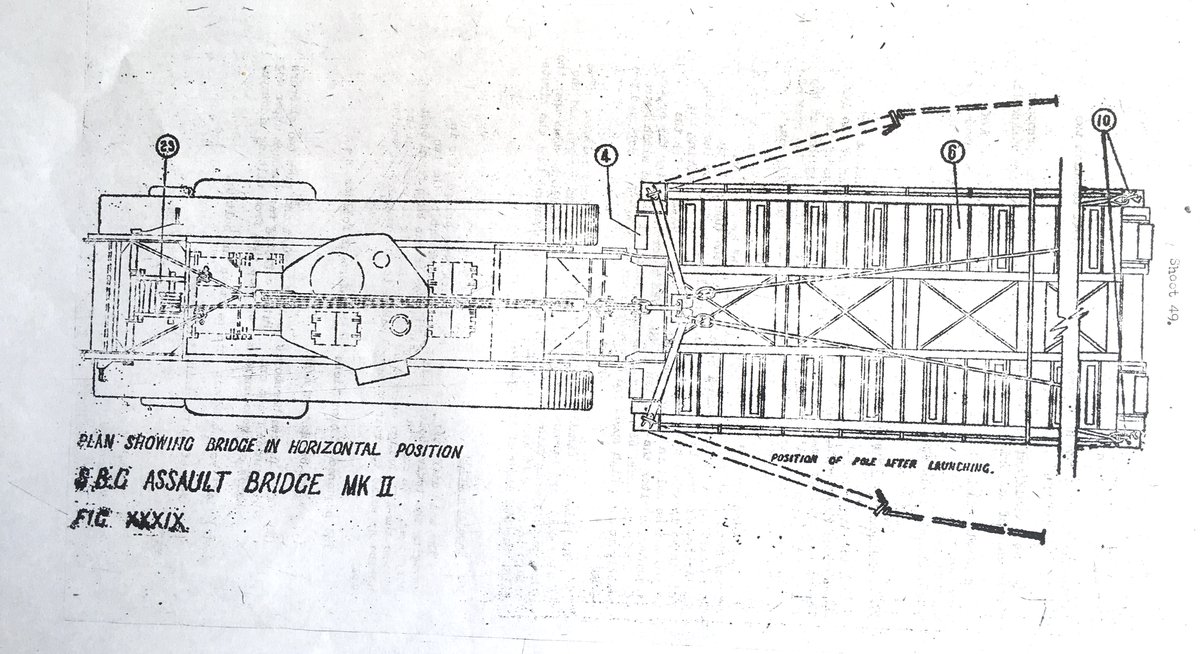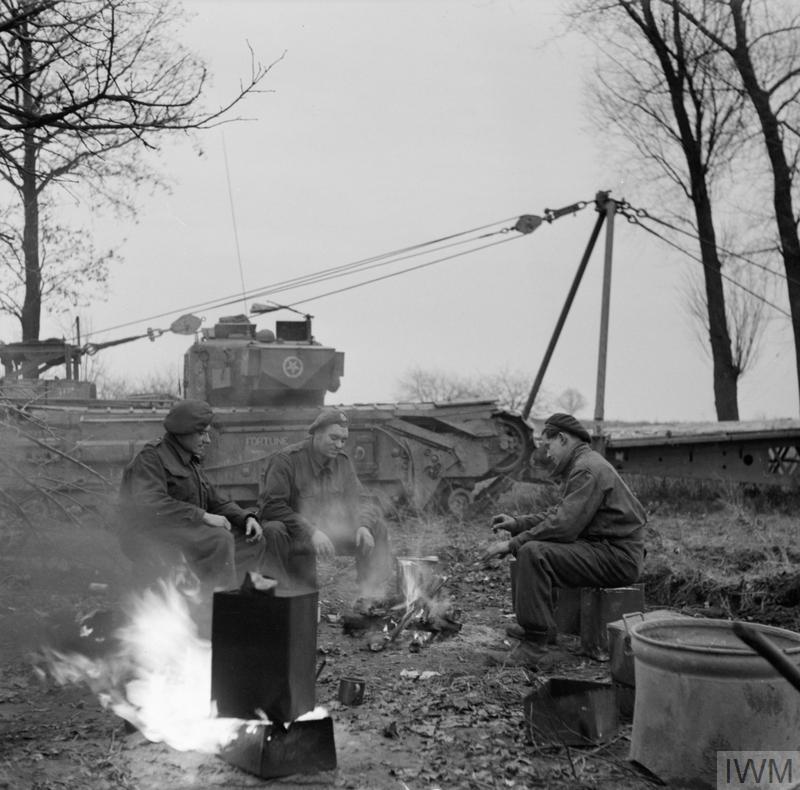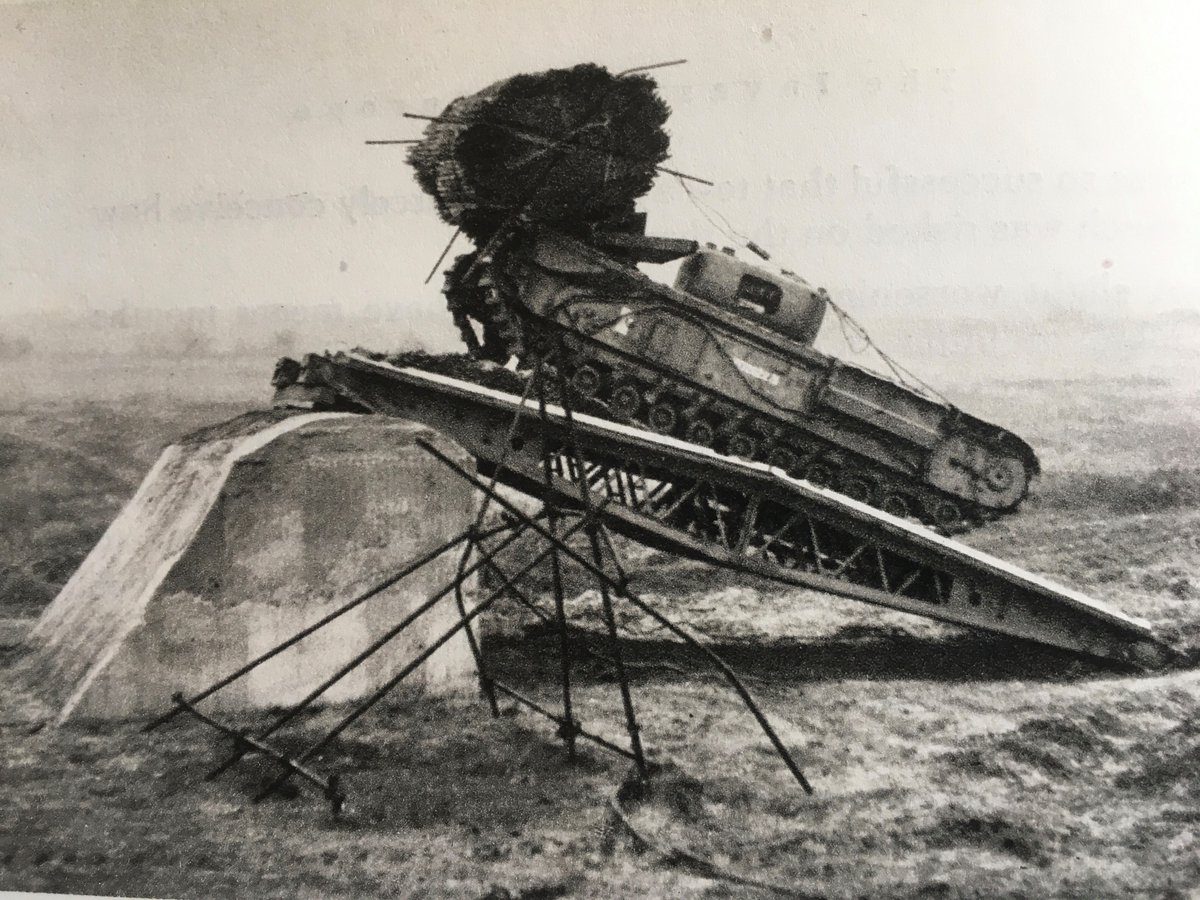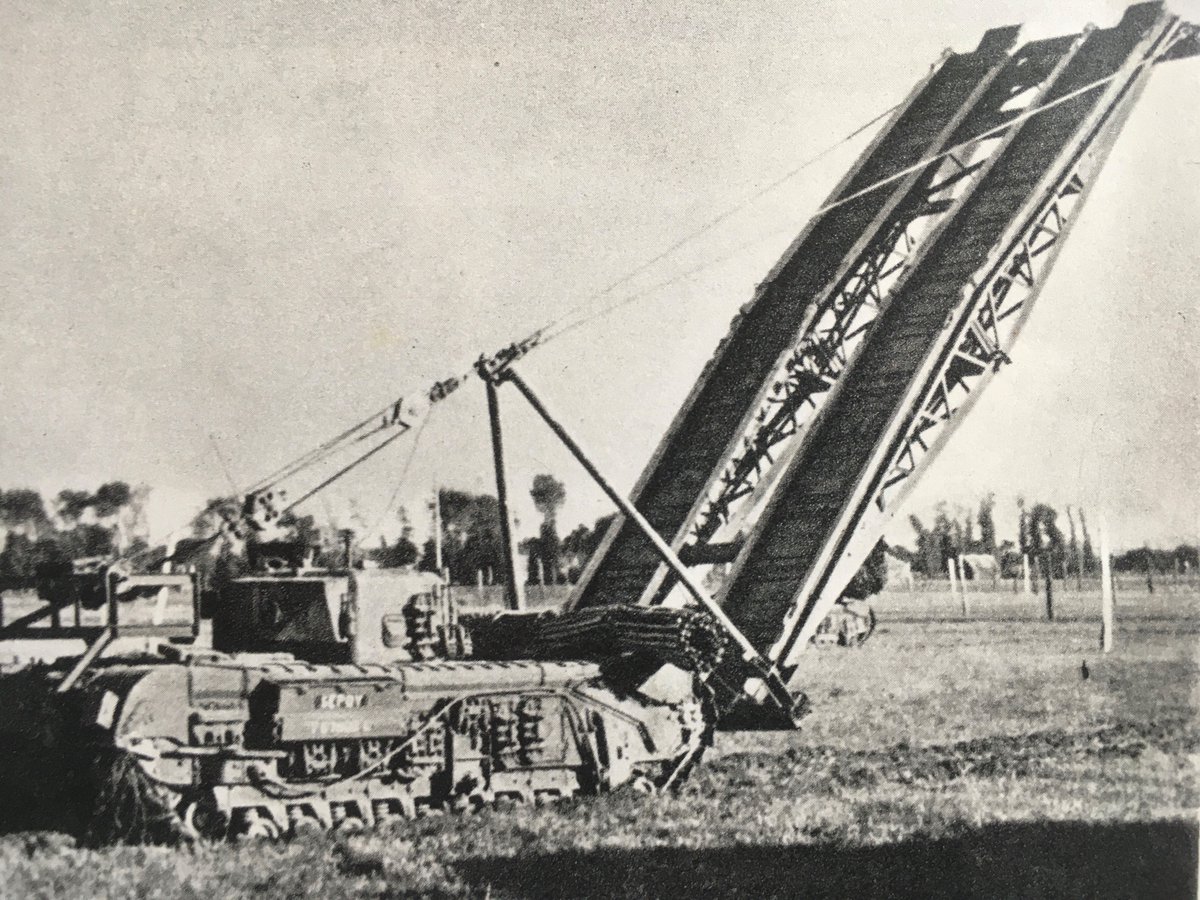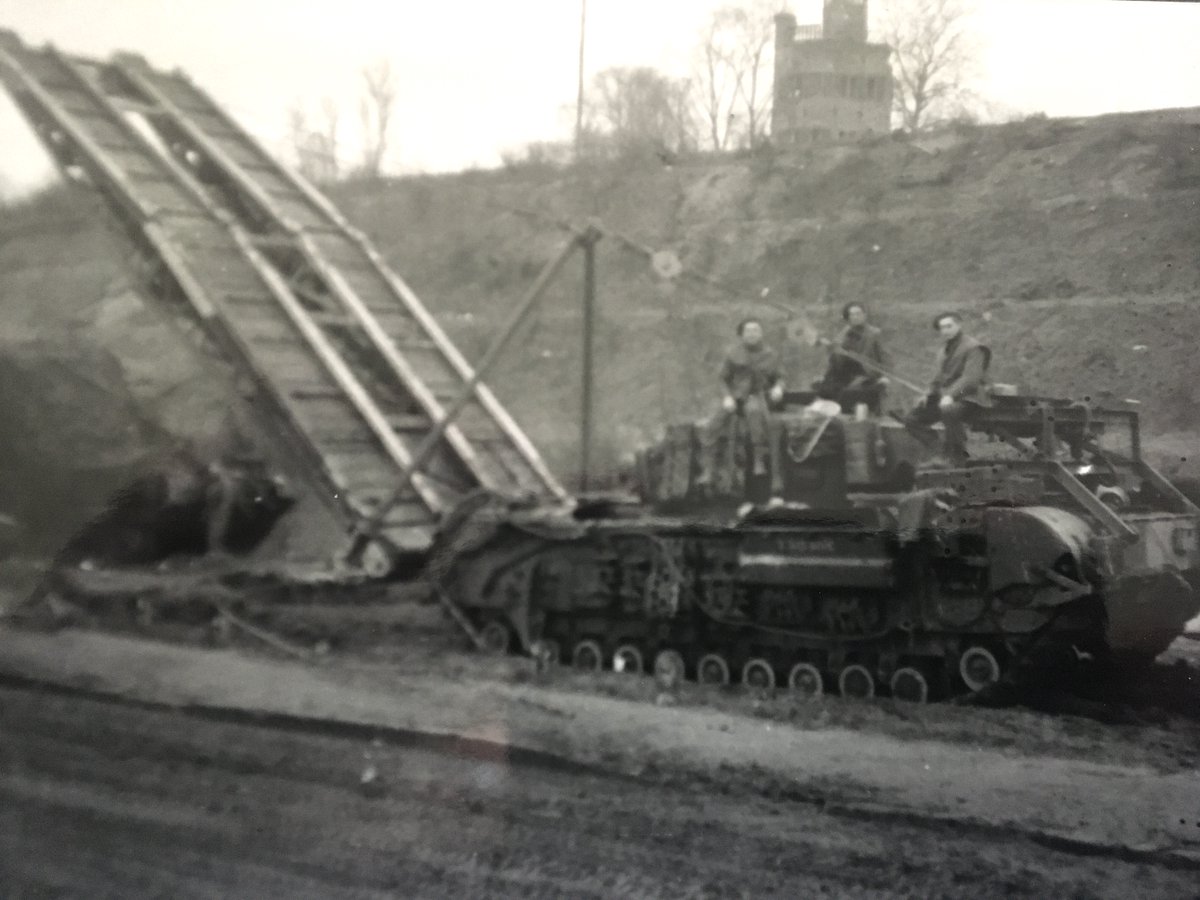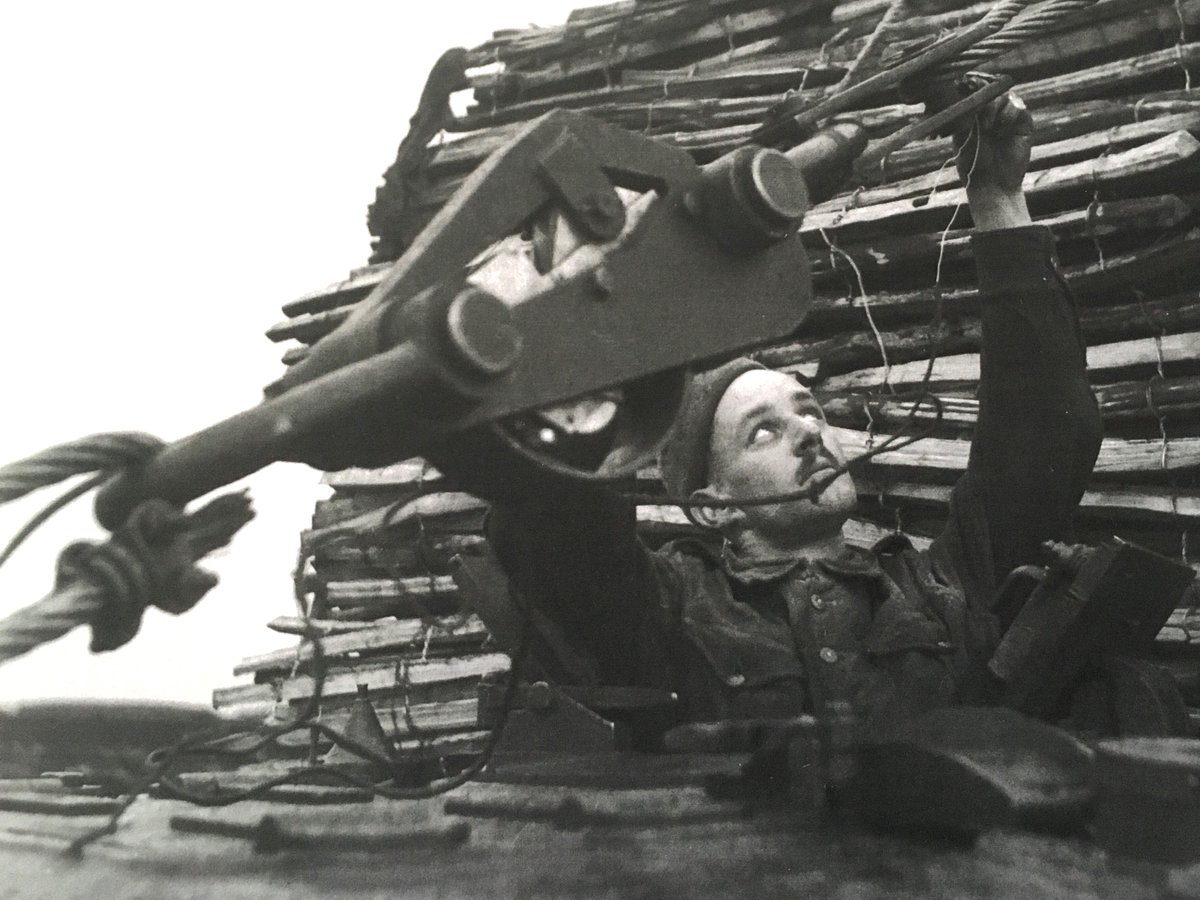The Small Box Girder (SBG) assault bridge was one of the devices carried by the AVREs of 79th Armoured Division in NW Europe. The bridge was developed in 1943 (see photo). It was 34 feet 6 inches long, could be used on a 30 foot gap and had a 40 ton capacity. 1/14
It used four sections of standard box girder equipment, two girders being attached together, then two of these sections joined at the front and rear, with bracing struts along the length. The girders were then decked. 2/14
At each end was a timber bankseat to provide firm seating on a bank or seawall. The driver and commander could see through the raised bridge for positioning. Two brackets were fitted on the front of the AVRE, and jaws on the bridge rear slotted into them. 3/14
On the rear of the AVRE was a 4 ton capacity winch assembly over the engine compartment. Cables ran from the winch, over two poles at the base of the bridge (so the cable cleared the turret) and were then attached to the front of the bridge. 4/14
The winch raised the bridge to its travelling position, about 40 degrees to the horizontal, where it was braked. The bridge was lowered by releasing the brake from the turret. A small explosive charge was fired, again from the turret, to complete the bridge drop. 5/14
There was also an emergency charge in case the primary failed. After the firing the poles fell away and the bridge dropped to rest on its bankseats. (A photo from 1945 shows the cabling well, in this shot of a lowered SBG; IWM photo). 6/14
In training one routine was to lay a bridge against a seawall, and then a fascine AVRE would climb it and use the fascine to fill the drop on the other side. The SBG was used extensively, to climb seawalls (up to 14 feet), cross ditches, rivers, and craters. 7/14
Carrying the SBG was wearing on the front bogies and some AVREs carried spares. On rough ground, controlling the SBG AVRE could be a problem for the driver. And SBGs caused some problems on landing craft when there was wind as they acted as sails. 8/14
SBGs were used extensively in NW Europe. In October, the British advanced to Venraij, part of the Overloon battle (Op Aintree), a battle characterised by mud, mortars and mines. A swollen watercourse, the Molenbeek, had to be crossed; AVREs of 617 Squadron were given the job. 9
Infantry had measured the crossing as being up to 30 feet (with a piece of string weighted by a stone). AVRE 2F (L/Sgt Finan) travelled through Overloon, the SBG bringing down comms wire as it went, until sappers went ahead to lift it. (Photo shows a 617 AVRE in 1945). 10/14
Tanks and infantry faced heavy fire. Ron Wood steered 2F through the mud to the bank of the stream, guided by Finan. Finan tried to release the brake to lower the bridge but to no avail. They tried to detonate the primary and backup charges but the cable had been shot away. 11
Under heavy fire Sgt Finan climbed out to assess matters. The only thing was to trigger the bomb release manually. This was 10 feet up and very heavy; the photo shows the mechanism, which was also used for fascines. 12/14
The Demolition NCO, L/Cpl Jack Stringer, had to climb on Finan’s shoulders and release the SBG by hand. The bridge dropped perfectly. Other tanks threw out smoke and provided covering fire. Ron Wood turned sharply and promptly went into a ditch. 13/14
The AVRE had to be abandoned. But this SBG was the only bridge available to 3rd Division to use for 24 hours. The AVRE was eventually pulled out. Finan got a bar to his Le Havre MM (from Monty), Stringer a Mention in Despatches – many thought he should have got the MM. 14/14

 Read on Twitter
Read on Twitter